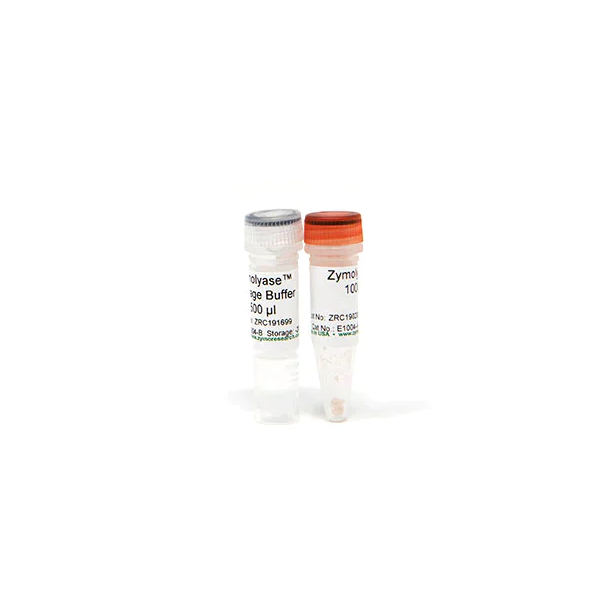| Description |
HIGHLIGHTS
- 100 T Equivalent: Prepared from Arthrobacter lutes. Essential enzyme activities are β-1,3-glucanase and β-1,3-glucan laminaripentao-hydrolase.
- Convenient: Provided lyophilized along with a storage buffer for reconstitution.
- Efficient Cell Wall Digestion: Supplied storage buffer has been optimized to confer maximum levels of enzymatic activity.
DESCRIPTION
Digestion of yeast and fungal cell walls is necessary for many experimental procedures including spheroplasting, immunofluorescence, transformation, protein purification, and others. The use of lytic enzymes like Zymolyase is routinely used for digestion. The Zymolyase from Zymo Research is prepared from Arthrobacter luteus, lyophilized, and packaged with a resuspension buffer. The buffer has been optimized to confer maximal levels of enzymatic activity. The main activities of the enzyme are β-1,3 glucanase and β-1,3-glucan laminaripentao-hydrolase, which hydrolyze glucose polymers at the β-1,3-glucan linkages releasing laminaripentaose as the principal product. Optimal Zymolyase activity is at 30° - 37°C; lytic activity ceases at higher temperatures. R-Zymolyase includes 0.5 U/µl RNase A when reconstituted. Susceptible fungal genera: Asbya, Candida, Debaryomyces, Eremothecium, Endomyces, Hansenula, Hanseniaspora, Kloekera, Kluyveromyces, Lipomyces, Metschikowia, Pichia, Pullularia, Saccharomyces, Saccharomyces, Saccharomycopsis, Schizosaccahromyces, and Torulopsis.
| Activity |
β-1,3-glucan laminaripentao-hydrolase and β-1,3-glucanase (trace amount of protease, ca. 1.5 units per 10 µl). DNase and RNase: none detectable. |
| Concentration |
5 U/µl |
| Deactivation |
Lytic activity is lost in 5 minutes at 60°C |
| Enzyme Source |
Arthrobactor luteus |
| Format |
Lyophilized enzyme provided w/ storage buffer |
| Optimum pH & Temp |
pH 7.5, 35°C (lysis of viable yeast), pH 6.5, 45°C (hydrolysis of yeast glucan). |
| Product Storage |
Zymolyase is stable for over 1 year at -20°C or many years below -70°C. |
| Protein Concentration |
~10-15 mg/ml |
| Susceptible Fungal Genera: |
Asbya, Candida, Debaryomyces, Eremothecium, Endomyces, Hansenula, Hanseniaspora, Kloekera, Kluyveromyces, Lipomyces, Metschikowia, Pichia, Pullularia, Saccharomyces, Saccharomyces, Saccharomycopsis, Schizosaccahromyces, Torulopsis |
| Unit Definition |
One lytic unit is defined as catalyzing a 10% decrease in optical density at 800 nm (OD800) at 30°C in 30 minutes. |
| Usage |
Spheroplast/Protoplast formation; Yeast cell fusion; Yeast transformation; Lysis of fungi |
|

 English
English



